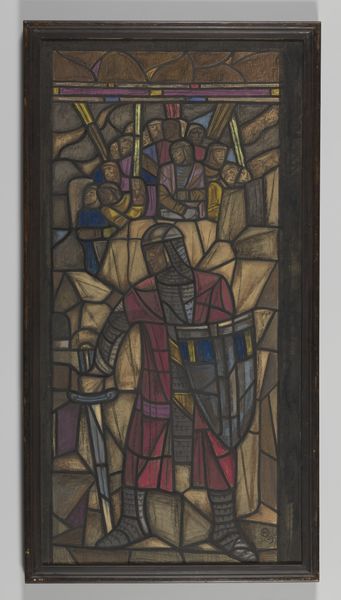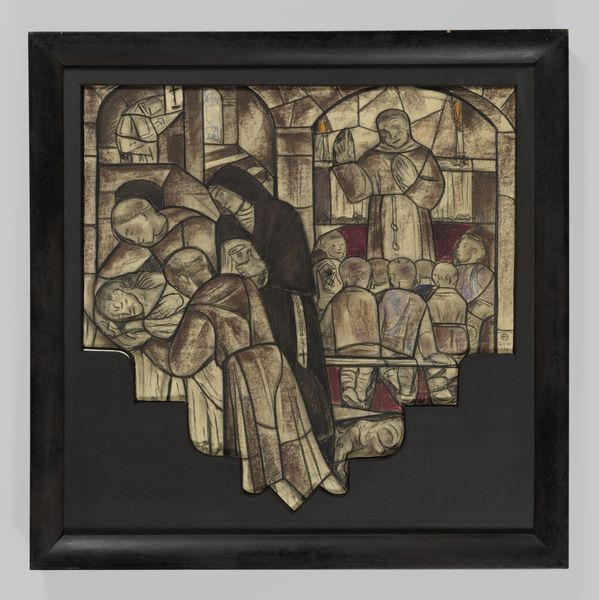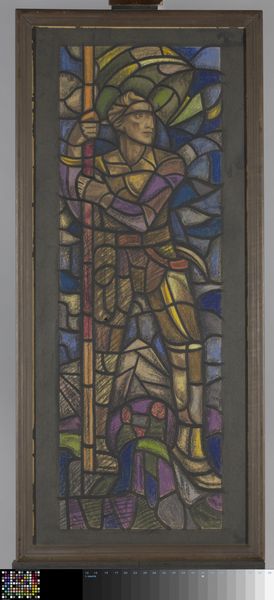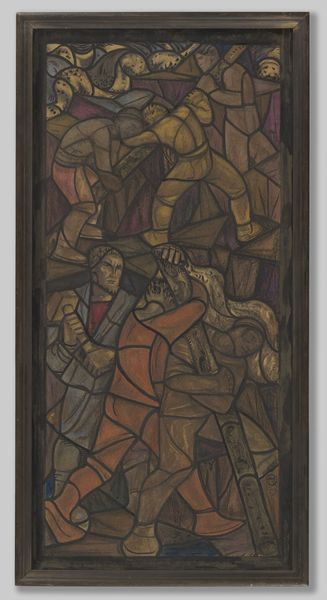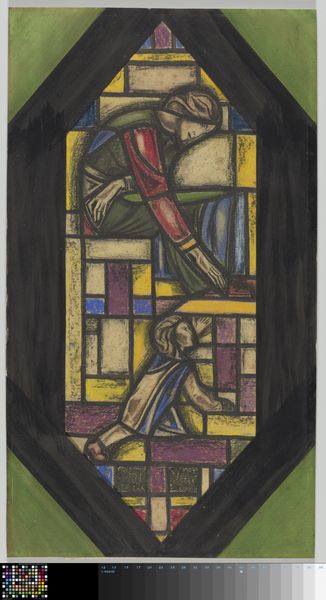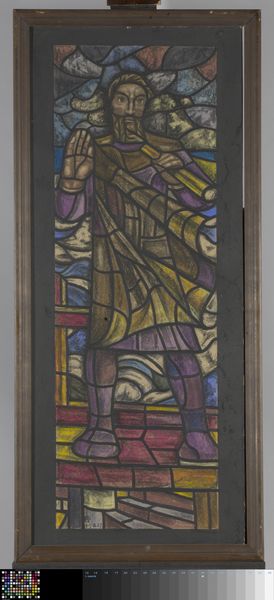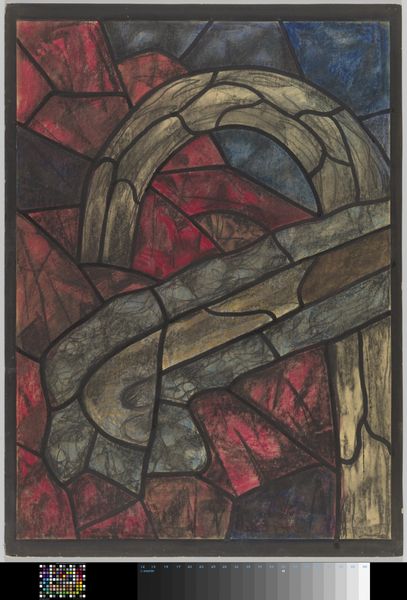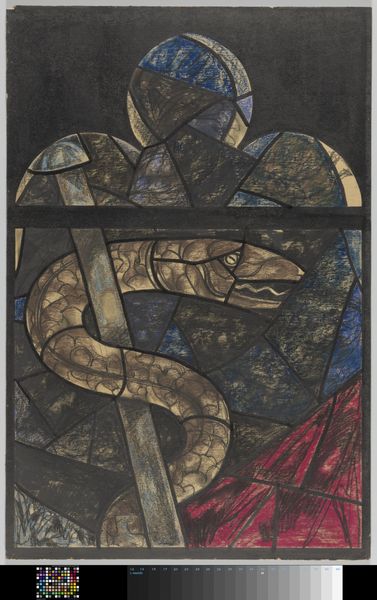
Ontwerp voor raam in het Stadhuis in Amsterdam Possibly 1930 - 1934
0:00
0:00
tempera, painting, mural
#
art-deco
#
narrative-art
#
tempera
#
painting
#
figuration
#
history-painting
#
mural
Dimensions: height 1000 mm, width 750 mm, height 1090 mm, width 840 mm
Copyright: Rijks Museum: Open Domain
Curator: Richard Nicolaüs Roland Holst's "Ontwerp voor raam in het Stadhuis in Amsterdam", likely created between 1930 and 1934, offers a fascinating study in tempera. First impressions? Editor: It feels burdened—literally weighed down. The browns and greys are so heavy. The overall mood is somber, like witnessing silent labor and shadowed negotiations, the air thick with unspoken things. Curator: Absolutely. Observe the linear articulation and blocked sections; it recalls stained glass. Roland Holst has harnessed the flat application of tempera to direct the eye systematically across a shallow picture plane. Notice, for instance, how color determines discrete volumes. Editor: And the narratives hinted at— laborers straining under heavy burdens on what appears to be a harbor. Men in conversation or, perhaps, in deliberation in front of some shelves of old books. Who has access to history? Who is forced to bear its weight, literally and metaphorically? Curator: Your emphasis is noted. Consider though, how the forms operate independently as shape and tonality. Note how light is used not for realistic rendering, but to highlight specific contours that delineate both function and form in clear visual terms. Editor: True, but those formal choices do create meaning, wouldn't you agree? These figures seem trapped by the hard outlines and desaturated colors into specific roles. A social hierarchy reinforced and rendered as art. Also, is that a dog I see cowering in the corner? Who are we failing to see here? Curator: One could argue, certainly, that the flattened perspective flattens all hierarchical narratives— that the simplification is inherently modern, thus operating outside traditional codes of the time. And indeed that formal language evokes both Art Deco and a wider discourse around abstraction! Editor: Still, the echoes of social inequality in Roland Holst’s composition are hard to ignore. This work speaks not just to modernist form, but also of an artist enmeshed in social questions, framing a specific narrative in his unmistakable, weighty style. Curator: Perhaps, in the end, it lies in the capacity of design, line and colour to echo our world, even as it attempts to transcend it. Editor: Leaving us to grapple with our perception and responsibilities, just like the workers within it.
Comments
No comments
Be the first to comment and join the conversation on the ultimate creative platform.


